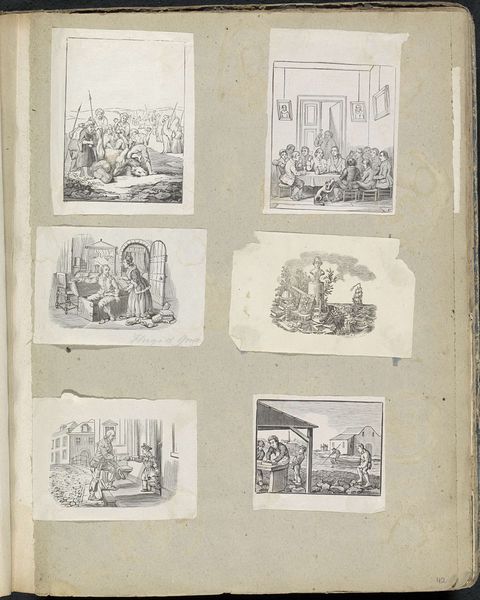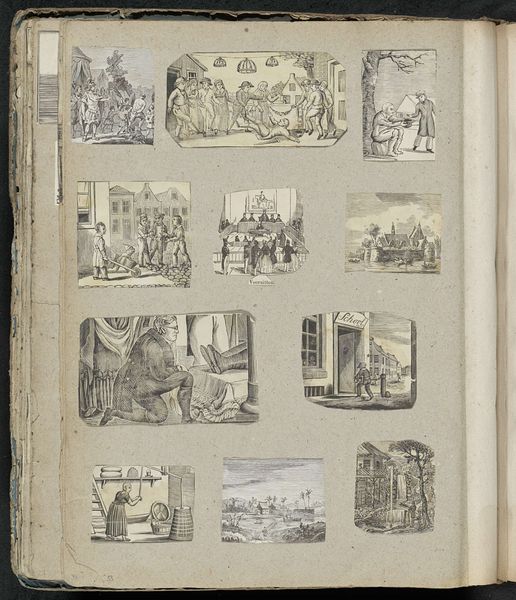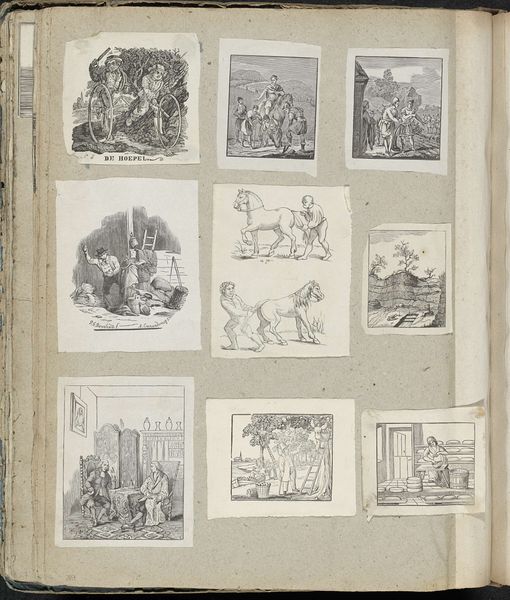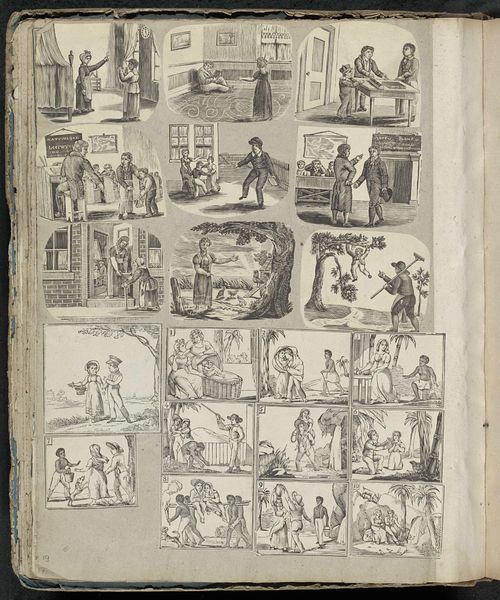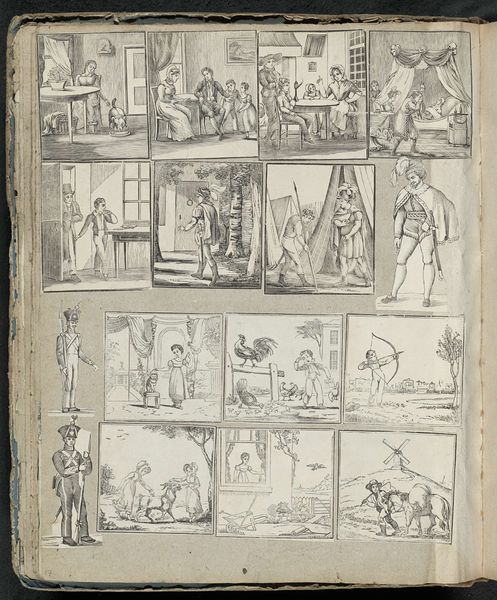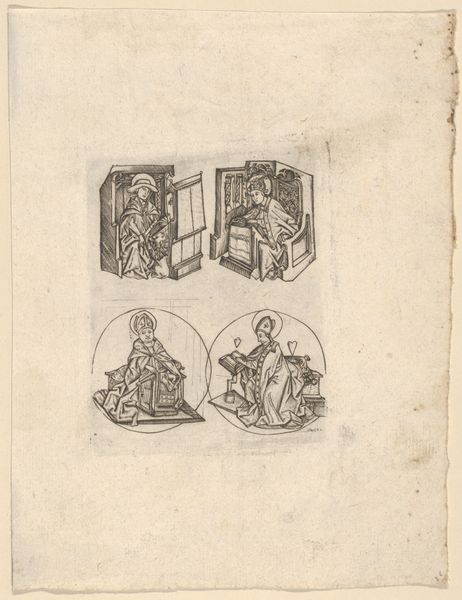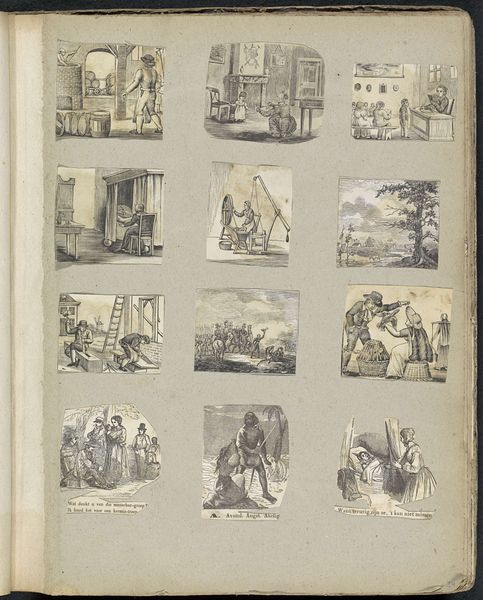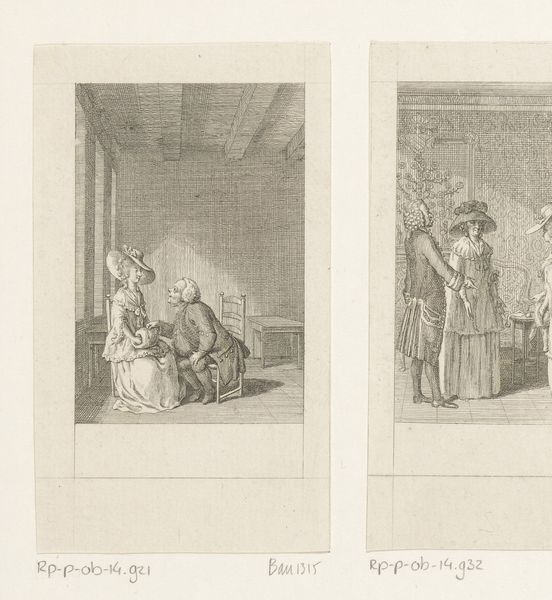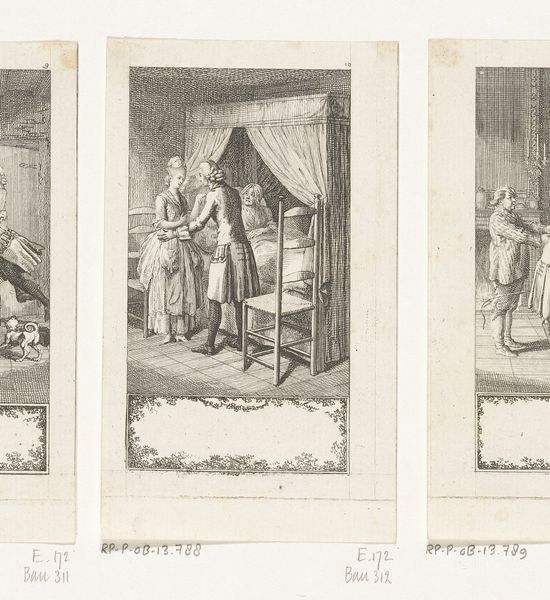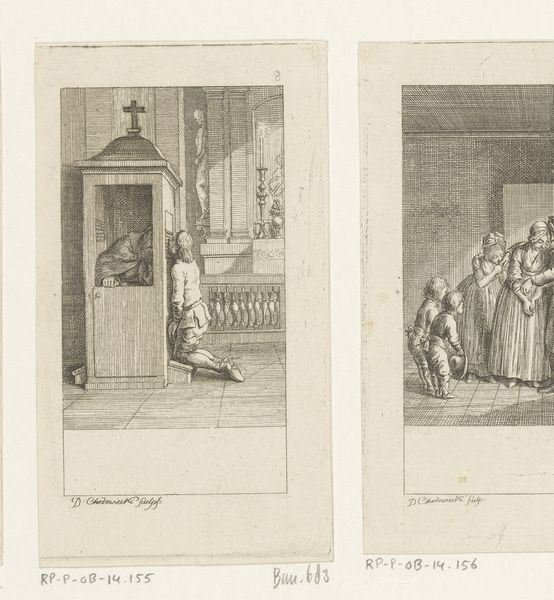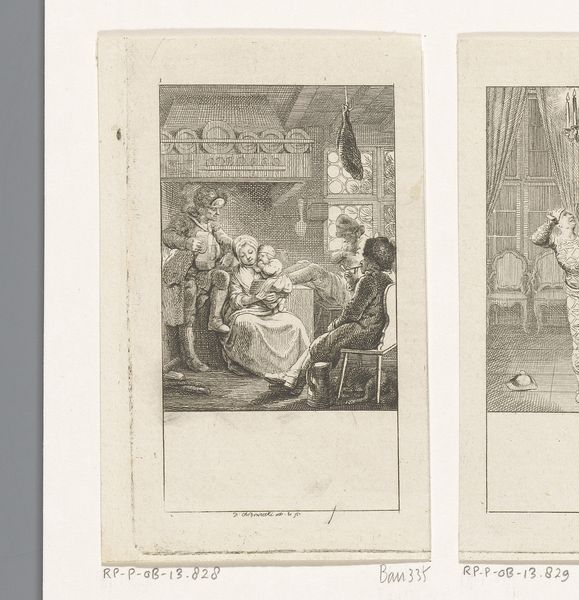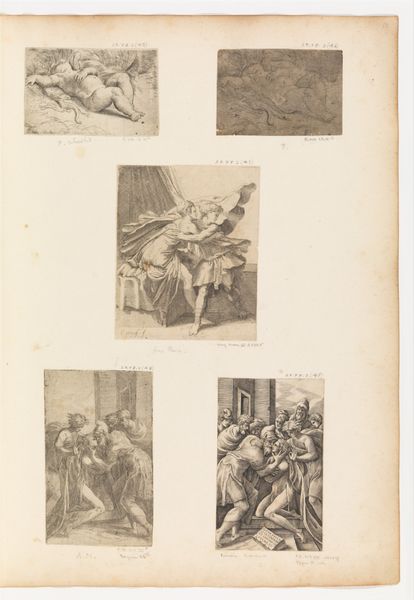
drawing, paper, ink
#
drawing
#
narrative-art
#
figuration
#
paper
#
ink
#
romanticism
#
genre-painting
Dimensions: height 403 mm, width 335 mm
Copyright: Rijks Museum: Open Domain
Curator: Alexander Cranendoncq created this album leaf, called "Albumblad met diverse voorstellingen," sometime between 1814 and 1869. It's a series of ink drawings on paper. Editor: It gives me the feeling of a page torn from a storybook, with all these miniature scenes vying for attention. They're full of everyday drama, all captured in meticulous detail with simple ink. Curator: These narrative genre scenes absolutely typify the Romantic style's fascination with relatable stories and emotive imagery. Cranendoncq invites us into these intimate, though undefined, moments in life. The symbols are intriguing aren't they? Like theater stages. What are the people expressing to you? Editor: For me, I think about the physical process involved. Imagine the steady hand needed to create such detail. And the repetitive nature of the ink strokes themselves seems relevant – a meticulous craft. But these miniatures also raise questions about consumption and taste; what did it mean to own and collect such an intimate, handmade item in this period? Curator: Good questions. This kind of detailed imagery creates powerful links across generations, doesn’t it? These images feel surprisingly timeless in the emotions that the figures convey. The piece connects us through themes that everyone can understand: life’s important relationships, maybe, the artist trying to frame experience with visual imagery? Editor: Indeed. Seeing all of them collected together on this page brings an unexpected focus on the labor involved, both artist and maybe even of the stories. We’ve moved beyond high and low culture! Curator: So, ultimately we can all connect with such domestic artwork by remembering the simple humanity of family and home, maybe the eternal recurrence of familiar patterns and stories through generations of cultural heritage, I'd say. Editor: And I think, considering that labor makes me look closer at how images and production matter, and challenge any divide between fine and everyday production.
Comments
No comments
Be the first to comment and join the conversation on the ultimate creative platform.
